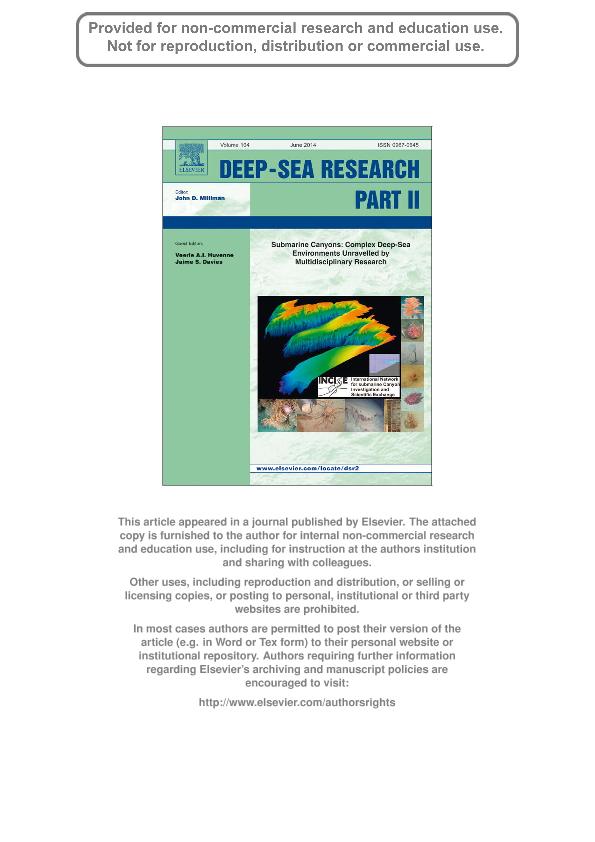Artículo
Epibiotic relationships on Zygochlamys patagonica (Mollusca, Bivalvia, Pectinidae) increase biodiversity in a submarine canyon in Argentina
Fecha de publicación:
06/2014
Editorial:
Elsevier
Revista:
Deep Sea Research Part II: Topical Studies in Oceanography
ISSN:
0967-0645
Idioma:
Inglés
Tipo de recurso:
Artículo publicado
Clasificación temática:
Resumen
The continental slope of the southern SW Atlantic Ocean has many distinguishable deep submarine canyons, varying in depth and extension. The benthic fauna within one of them, detected in April 2005 by means of a multibeam SIMRAD EM1002 sonar, and located at 43°35′S to 59°33′W, 325 m depth, was studied to discuss faunal affinities with the neighbouring Patagonian scallop fishing grounds located at upper slope depths. In order to add faunal information to the previous general study, we studied the epibiotic species settled on Patagonian scallops (the dominant species in the area) collected in the reference sampling site using a 2.5-m mouth-opening dredge, 10 mm mesh size. We sampled 103 scallops with shell heights between 22 and 69 mm; epibionts were recorded on both valves. We found 53 epibiotic taxa, which were most conspicuous on the upper valve. Bryozoa was the most diverse group (34 species) while Polychaeta was the most abundant group, recorded on 94% of the scallops. Stylasteridae (2 species) and Clavulariidae (Cnidaria) conform newly recorded epibionts on Z. patagonica and the sponge Tedania (Tedaniopsis) infundibuliformis also represents a new record for the SW Atlantic Ocean.
Archivos asociados
Licencia
Identificadores
Colecciones
Articulos(MACNBR)
Articulos de MUSEO ARG.DE CS.NAT "BERNARDINO RIVADAVIA"
Articulos de MUSEO ARG.DE CS.NAT "BERNARDINO RIVADAVIA"
Citación
Schejter, Laura; Lopez Gappa, Juan Jose; Bremec, Claudia Silvia; Epibiotic relationships on Zygochlamys patagonica (Mollusca, Bivalvia, Pectinidae) increase biodiversity in a submarine canyon in Argentina; Elsevier; Deep Sea Research Part II: Topical Studies in Oceanography; 104; 6-2014; 252-258
Compartir
Altmétricas




